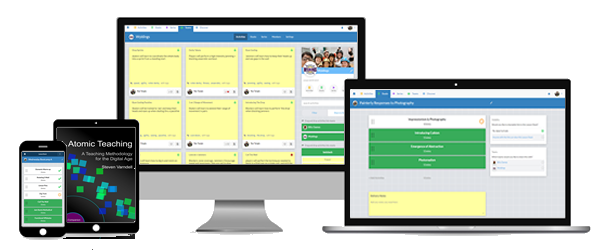
LessonStack is a free lesson planning tool!
Sign up to start dragging and dropping activities into your lesson plans!
Sign up - it's Free!Already a member: Login
 Cherry Bombe
:
1h Practice different Feedback methods
Cherry Bombe
:
1h Practice different Feedback methods
60mins
This is a workshop of one hour to practice different feedback methods together as a team, and it can be used to develop a common feedback language together as a team. We will treat four different feedback methods in this workshop, but there are many others your team can use. It helps if you give different example for the exercises, possibly with "good" and "bad" examples of how to give and receive (or how to NOT give and receive) feedback. End the training with asking for feedback from the group, using the "in-one-breath" method.

I skate, train, and ref at Rotterdam Roller Derby as Cherry Bombe #47 since 2022. Before that I skated at The Parliament of Pain The Hague Roller Derby. Have been skating since 2014. I love using LessonStack to write out drills and trainings and share

Sign up to start dragging and dropping activities into your lesson plans!
Sign up - it's Free!Already a member: Login
 Explanation of feedback principles
Explanation of feedback principles
15
mins
Use this time to explain why feedback is important to you and your team, and what some basic principles are of good feedback.
Why is feedback important? (you can adapt this to your needs)
What basic principles are important when giving or receiving feedback?
In addition, you can talk about when to give and ask for feedback.
You can also choose to do this at the end, if you're giving a longer training on feedback.
 Feedback practice: one breath
Feedback practice: one breath
10
mins
One of the biggest challenges we all have when providing feedback is to stay focused. Most of us can’t remember too many things at once; long, detailed feedback can confuse the receiver.
Also, after receiving feedback, people need time to decant it.
This feedback exercise forces people to stick to the point. They have to provide feedback during one breath (for most people, 15-20 seconds).
Divide people into couples, they don't have to know eachother very well for this exercise. Let each couple give the other person feedback within one breath. You can rotate and let them give other people feedback too if time allows.
This feedback technique can be used:
 Feedback practice: AIR-principle
Feedback practice: AIR-principle
10
mins
<br> Divide people into couples **that know eachother and have worked together**. Let each couple give the other person feedback using the AIR model. You can rotate and let them give other people feedback too if time allows.Constructive feedback is feedback on an individual’s performance that helps build connection, successful habits and behaviors. The constructive component is key to this approach.
The AIR Feedback Model can be a helpful framework for constructive feedback. The acronym stands for “Action”, “Impact” and “Request”.
ACTION: The “action” is the concrete action you personally observed.
IMPACT: Given that action, what was its impact on you, others or a situation.
REQUEST: The suggested alternative behavior that could correct the situation.
This feedback technique can be used:
 Feedback practice: start-stop-continue
Feedback practice: start-stop-continue
10
mins
Start stop continue feedback is a highly intuitive and easy to implement feedback framework for growing organizations. It can be used for and by anyone including teams and individuals for feedback by managers and peers as well as for
- Start: Focuses on actions or behaviors that an employee should commence for high levels of performance, generally around the areas of improvement
- Stop: Focuses on actions or behaviors that should be eliminated or significantly reduced because of their negative impact on the performance, mostly the weaknesses
- Continue: Focuses on actions or behaviors that must keep going based on their positive impact on the performance, often referring to the strengths
Thus, the start stop continue feedback enables employees to receive feedback on all aspects which is constructive, appreciative and sets a ground for improvement. Divide people into couples that know eachother well and/or have worked together before. Give them a bit of time to write out the start-stop-continue points of feedback they have for the other person. Then let them give eachother the feedback.
Start-stop continue feedback can be used:
 Feedback practice: team-of-two
Feedback practice: team-of-two
10
mins
Each person writes down 1) How they think they could help the other person and 2) How they think the other person could help them. The people decide what to do.
A person may say: <br>
- "You think that would help me, but I don't really need that." if someone has incorrectly identified something that they think the other person wants.
- "Of course I will do as you ask". This would be sensible if the request is easy and gives an immediate benefit.
- "I can't do that because......" . The request might violate your values, by being (say) unethical, or it might be politically unacceptable, or take too much time.
- "I would be prepared to meet your request if you would help me with this one of mine". The request might demand work or a change of attitude. You would both win eventually.
Make couples of people (this can also be done in small groups). Give them some time to write down things they think can help the other(s) and thinks they would like help with.
This feedback method can be used to: